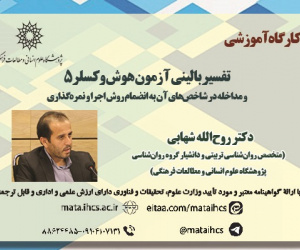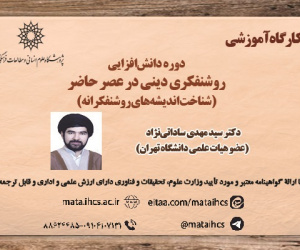تنوع زیستی (طبیعی-اجتماعی) به مثابه الگوی مداخله برای آبادانی سرزمین (پرسش گری از بهم پیوستگیِ حوزه های زیستی-اجتماعی) (مقاله علمی وزارت علوم)
درجه علمی: نشریه علمی (وزارت علوم)
آرشیو
چکیده
ایده اصلی این مقاله بر پیوند حوزه های طبیعی و انسانی در تحلیل مسائل تنوع زیستیِ طبیعی-اجتماعی و پژوهش های آن، استوار است. از این رو، چگونگی بازاندیشی تنوع زیستی بر مبنای پیوستگی و یکپارچگی سطوح و لایه های درهم پیچیده ی بیولوژی و فیزیولوژی و اکولوژی، به عنوان یک مساله و چالش حیاتی مطرح می شود. چنانچه تنوع زیستی را به مثابه گنجینه مواریث طبیعی و انسانی در نظر بگیریم، روابط لایه های پیش گفته، در طول زمان، مشاهده و درک خواهند شد. درهم تنیدگی مواریث طبیعی و انسانی، تنوعی از تغییرات و مداخلات را در بر دارد که کارورزی و عملکرد بشر را در طیفی از انواعِ روابط «فرهنگ و فناوری» در طول تاریخ به نمایش می گذارد. چگونگی بازاندیشی تنوع زیستی در طول زمان و حفاظت از آن و آینده نگری روند تغییرات، بدین صورت در پرسش اصلی مقاله آورده شده است: جایگاه مباحث انسانی و مطالعات اجتماعی در پژوهش های علوم زیستی چگونه قابل شناسایی و بازیابیِ فرهنگی و فناورانه است؟ برای پاسخ گویی به پرسش اصلی از روش توصیفی-تحلیلی-انتقادی و رویکرد تلفیقی از مناظر اکولوژی عمیق و آمایش سرزمین استفاده شد. به نظر می رسد با بازآرایی و عبور از تک-حوزه رشته ها به سوی فعالیت های بین رشته ای و فرا رشته ای برای غلبه بر گسست دانشی موجود میان حوزه های طبیعی و انسانی، از یک سو و توجه به هم بست «فرهنگ-زیست بوم-فناوری(بومی و نو)» از سوی دیگر، بتوان هم کاری های علمی را با محوریت زیست بوم و هدف گذاریِ پیشرفتِ مانا، سامان داد. زمین-گیاه به مثابه بستر زیست های پایدار و تنوع استقرار و اسکان در زیست جمعی در قالب آمایش سرزمینِ بوم پایه، سرفصلی کلان برای پیوندشناسی کلان حوزه های علمی (علوم اجتماعی و انسانی، فنی-مهندسی، و علوم پزشکی و دام پزشکی) می باشد. بدیهی است روند بازتوانی علمی و احیاء سوادِ زیستی-اجتماعی برای حرکت به سویِ پیشرفت مانا، می بایستی در شبکه ای پویا از دیگر سرفصل های بنیادین، تکمیل شود و مستمراً اصلاح و ارتقاء یابد. امری که در این مقاله به صورتِ هم بستِ «فرهنگ-زیست بوم-فناوری» پیشنهاد شده است.Biodiversity as a model of intervention for earth development (Questioning the interconnectedness of biological-social domains)
The main idea of this article is based on the connection between natural and human fields in the analysis of biodiversity issues and its research. Hence, how to rethink biodiversity based on the interconnectedness of complex levels and layers of biology, physiology, and ecology is an issue and a challenge. If we consider biodiversity as a treasure trove of natural and human heritage, the relationships of the aforementioned layers will be observed and understood over time. The entanglement of natural and human heritages involves a variety of changes and interventions that represent internships and human performance in a range of "cultural and technological" relationships throughout history. Accordingly, how to rethink biodiversity over time and conserve it and foreshadow the process of change, is presented in the main question of the article: How can the place of human issues and social studies in biological sciences research be identified and culturally and technologically retrieved? To answer the main question, descriptive-analytical-critical method and combined approach of deep ecological landscapes and land use were used. It seems that by rearranging and moving from single-discipline to interdisciplinary activities to overcome the existing knowledge gap between the natural and human domains, On the one hand, and considering the nexus of "culture-ecosystem-technology" on the other hand, it is possible to organize scientific collaborations with the focus on the ecosystem and the goal of sustainable development.







